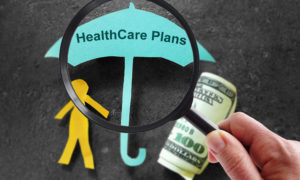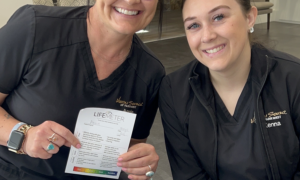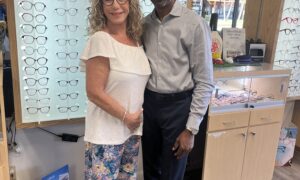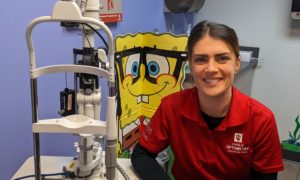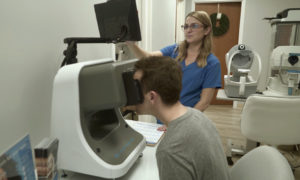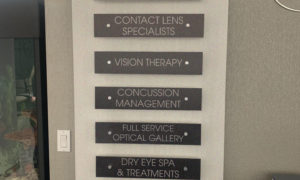
Photo credit: Getty Images
The practice-building opportunity of a public speaking engagement.
By Cindy Hui, OD
April 3, 2024
A few years ago, my mother was sick and living in a skilled nursing home facility. I visited her daily and developed a rapport with the staff there.
Over time, they learned I was an optometrist, and we bonded over our shared background as healthcare providers. That rapport I forged ended up being fortuitous for both them and me. Here’s what happened.
Unexpected Request
One day, the director of nursing approached me to give an impromptu “in-service” lecture. “In-services” are periodic staff meetings involving relevant topics such as workplace issues, CPR training and medication guidelines—similar to what other fields refer to as “stand-up” meetings or pre-task “huddles.”
The scheduled speaker for the monthly in-service canceled at the last moment, leaving the director of nursing in a bind. She begged me to give a brief discussion about optometry.
Past trauma from public speaking flashed before me, but I suppressed these feelings as I was sympathetic to her situation and wanted to help. What enabled me to manage my fear was the realization that I would be speaking to a group of familiar faces and friends.
The stage was already set: there was a half-hour time slot, with food and refreshments laid out in abundance. About 20 personnel trickled into the room following the meeting announcement over the intercom. All that remained was the main attraction, a speaker who would engage the audience with meaningful and insightful information.
Personal Engagement
My approach would be a typical patient education script familiar to every optometrist. After I introduced myself, I explained what optometrists do and how it is different from the work of ophthalmologists and opticians using specific examples. I briefly covered topics including glasses and contact lenses, vision and the treatment and management of ocular disease.
To tailor my speech to the nursing home demographic, I described the disease process of cataracts, glaucoma and macular degeneration. Skilled nursing home facilities are involved in all aspects of patient care, including post-hospitalization treatments and surgical aftercare. My audience had medical training, so I felt comfortable presenting ophthalmic drop dosing for pre- and post-op cataract surgery, glaucoma drop regimens and intravitreal injections for macular degeneration.
After 15 minutes, I asked if anyone had any questions. I addressed concerns about eye infections and diabetic retinopathy. I was relieved as I concluded the meeting and continued mingling with the staff to respond to any remaining queries. I was surprised by questions about the pricing of eye exams and glasses, accepted insurance plans and office location. Some even took out their medical insurance cards for my review!
Other Articles to Explore
Unexpected Rewards
I was so grateful that I did not have a public speaking meltdown, I did not dwell on the incident and simply moved on. Two months later, two staff members from the nursing home scheduled appointments with me. Despite lacking separate vision insurance, which I had previously explained during the in-service, they were well-prepared and happy to pay for the exam and glasses fee out-of-pocket.
Our first patient presented with mild myopia, for whom we recommended single vision polycarbonate lenses with Transitions. The second patient, an emerging presbyope, opted for two pairs of glasses. The first pair featured single-vision Transitions for distance vision, while the second pair addressed prolonged computer work with single-vision lenses.
Revenue calculation
The examination fee for two patients amounted to $400, calculated at $200 per exam. Additionally, the total revenue generated from the sale of spectacles, priced at $400, $300 and $250, respectively, equaled $950. The total revenue from these services totaled $1,350.
Cost of investment calculation
The cost per patient in our practice was $150. I added a half-hour for my time for the in-service, which I rounded up to $50. The total investment cost was $350.
ROI calculation
The following table lists the values and ROI calculation.
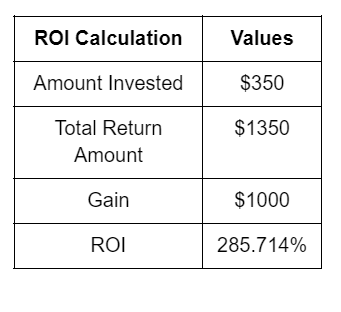
Practice and Personal Growth
More important than the immediate monetary value was the potential of generating future referrals and establishing lifelong relationships with patients and friends within our practice.
Also, I gained greater confidence in public speaking and a realization that marketing need not be elaborate or staged. I can genuinely promote myself and my practice simply by fostering personal connections within my own community.
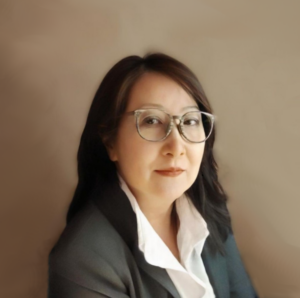 Cindy Hui, OD, is currently a freelance medical writer. She previously worked for a group practice that specialized in mobile eye exams for nursing homes and other facilities. To contact her: e-mail address: drcchui@gmail.com
Cindy Hui, OD, is currently a freelance medical writer. She previously worked for a group practice that specialized in mobile eye exams for nursing homes and other facilities. To contact her: e-mail address: drcchui@gmail.com

